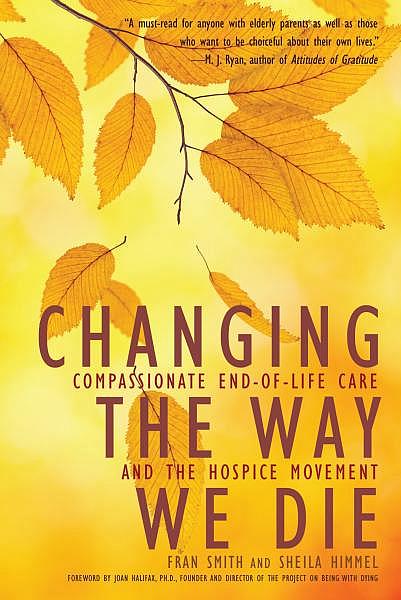At the End of Life, Hospices Try to Bridge the Racial and Ethnic Divide

Lourdes Ramirez, front center, a patient of Hospice of Santa Cruz County
By Sheila Himmel and Fran Smith
Hospice of Santa Cruz County, California, nestles in a redwood grove at the end of a cul-de-sac. While peaceful and lovely, the building is inaccessible to the large and growing population of Latino families who live in or near the Watsonville, 20 miles away. That’s why the non-profit hospice recently opened the Center for End-of-Life Care in Watsonville, next to a major hospital. The center serves as a base for Spanish-speaking hospice staff and offers educational events, training, and grief support for the community. Stacks of a photo-novella, Una Historia de Hospice, greet visitors.
An inability to attract communities of color has been the greatest failing of the 40-year-old hospice movement in the United States. In its neglect, hospice has marched in step with the health care system overall. Still, the movement that was so far-sighted in its compassionate, holistic approach to the care of the dying has had a blind spot regarding race and ethnicity. People of color are the fastest growing populations in America, and by mid-century, they will represent the majority. Yet more than eighty percent of hospice patients are white.
Age accounts for some of the disparity — populations of color skew younger. But they have higher death rates from many cancers and other diseases, and many more patients can benefit from hospices services. Terminally ill white patients are much more likely to hear about hospice through a relative or friend, somebody they trust who had a good experience with a program. People of color typically learn about hospice in the hospital, from a stranger. A study summed up a common reaction among Latinos: “I didn’t know what hospice was. I thought it was a place worse than a hospital.”
Hospice pioneers in the 1970s battled such misconceptions but most did not venture beyond their white middle-class worlds. At last that is changing. Some hospice Web sites offer a half-dozen or more language options. Some hospices sponsor events, such as Thanksgiving dinner, in underserved communities as a form of outreach. And more and more hospices employ cultural liaisons like Silvia Austerlic, an immigrant from Argentina who has been working with Hospice of Santa Cruz County to address a problem readily apparent in numbers: Latinos represent 33 percent of the county’s population but only 5 percent to 8 percent of the agency’s patients.
To Austerlic, bridging the gap is not a matter of saying, “Oh, let us give you quality of life.” It is, “Tell us what you need.”
Serving diverse communities requires more than translating the words of hospice into different languages. It demands a nuanced understanding of culture and values. Otherwise, hospice may look like withdrawing treatment and giving up hope.
Santa Cruz hospice doctors and nurses need to know about curanderismo, folk healing practices, in case patients want to include its prayers, massages and other rituals in their care. Social workers need to understand how loss plays out in traditional Latino communities.
“The whole idea of grieving is foreign,” Austerlic said. “No, you suffer and move on. The Day of the Dead, yes, but not ‘working through your grief.’” The hospice team also needs to understand attitudes like the one that prompted a Latino study participant to say: “The worst thing about hospice care? The way they talk to you about death.”
Changing the Way We Die co-author Sheila Himmel
(PHOTO: Changing the Way We Die co-author Sheila Himmel)
The challenge for hospices is to build trust, a two-way street. As opposed to missionaries coming in to convert, or anthropologists to study, the goal of hospice is to be a partner in care.
For Hospice of Santa Cruz County, setting up shop in Watsonville is a move in that direction —“like bringing a casserole to a neighbor.” Austerlic says. “We don’t just visit. We live here.”

